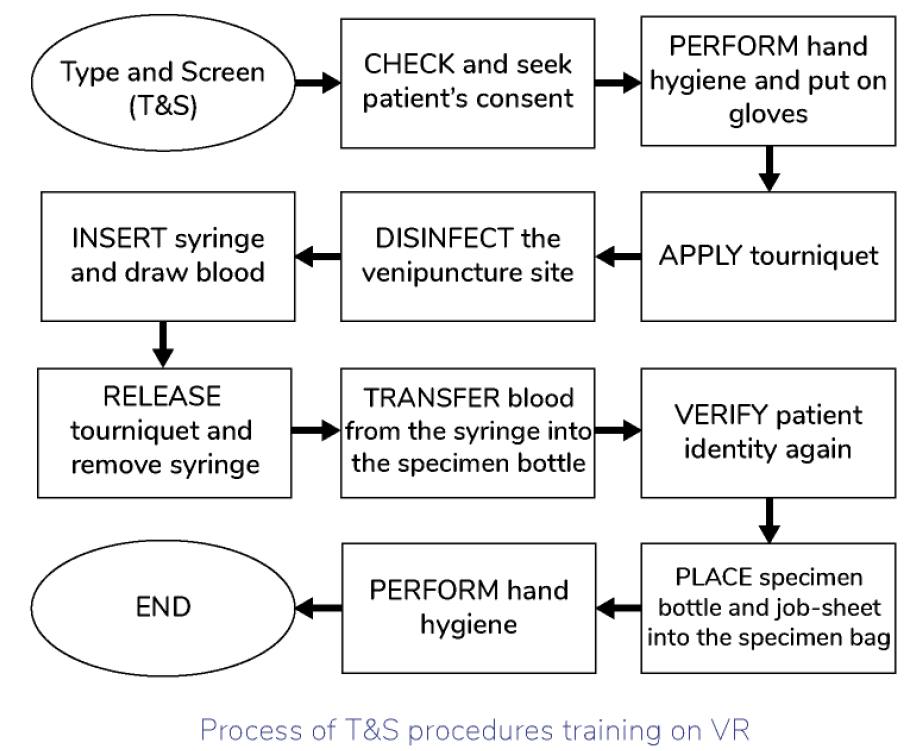Queen Elizabeth Hospital: Virtual Reality Training for Type and Screen Procedures
Novel virtual reality (VR) system to provide personalized accommodating training for myopia, amblyopia, and strabismus therapy of adolescents and younger children
Overview
Type and Screen (T&S) procedures require intensive practical training for each medical practitioner in hospitals. This project applied an interactive Virtual Reality (VR) technology to supplement the traditional approach for procedural training. The VR system was developed using Unity3D for application development.
To assess the reliability and validity of this conceptual medical training model, a survey was conducted to measure the content, motivation, and enhanced readiness of practitioners. Additionally, Partial Least Squares (PLS) modeling was used to investigate the correlation between each pair of measured variables.
Training Process in VR
The VR training for Type and Screen procedures replicates the following steps, offering a realistic and interactive practice environment:

Viewport
In the VR system, practitioners experience the procedure from the viewpoint of a nurse. To enhance the interactive experience, the system includes several key elements:
- Warning Messages: When a step is not performed correctly, a warning message is displayed on the notice board, guiding the trainee to repeat the procedure properly.
- Simulated Tool Drops: Virtual tools that fall to the ground remind the user to use clean tools as they would in real situations.
- Report Generation: After completing the training, a detailed report is generated to track the trainee’s performance.

Technology
The VR system makes use of high-quality graphics and interactive elements to ensure an immersive learning experience. It accurately simulates the physical steps involved in Type and Screen procedures, providing real-time feedback and improving the readiness of medical practitioners.
Key Benefits
- Interactive Learning: Real-time feedback and error messages help reinforce proper techniques.
- Reduction of Errors: The system allows practitioners to practice procedures repeatedly, reducing the likelihood of errors in real-life situations.
- Detailed Performance Tracking: A report is generated after each session to assess the proficiency of the practitioner.
Partnership
This project is the result of a collaboration between RIVRT and Queen Elizabeth Hospital, specifically within their Multi-Disciplinary Simulation and Skills Centre (MDSSC). The collaboration combines expertise in healthcare and virtual reality to create an effective training tool for medical professionals [1].
Publications
This project is documented in the following publication:
Tang, Y.M., Ng, G.W.Y., Chia, N.H., So, E.H.K., Wu, C.H.P.*, Ip, W.H. (2021).
Application of virtual reality (VR) technology for medical practitioners in type and screen (T&S) training.
Comput Assist Learn., 37, 359-369.
Demo
Contact Information
For more details on the project, please contact the RIVRT team at Contact Us.
